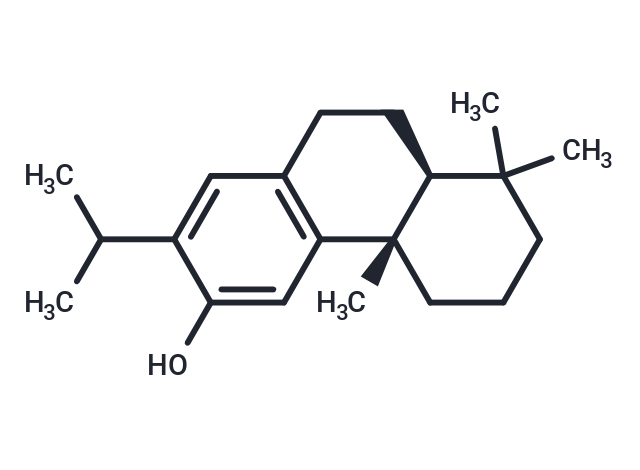Shopping Cart
- Remove All

Your shopping cart is currently empty


| Pack Size | Price | Availability | Quantity |
|---|---|---|---|
| 5 mg | $460 | Backorder | |
| 1 mL x 10 mM (in DMSO) | $470 | Backorder |
| Description | Ferruginol has anti-plasmodial, leishmanicidal, anti-ulcerogenic, cardioprotective, anticancer, anti-oxidative and anti-inflammatory activities, it can induce apoptosis in non-small cell lung cancer (NSCLC) cells. |
| In vitro | The radial accumulation pattern of Ferruginol was examined from sapwood and through the intermediate wood to the heartwood by direct mapping using time-of-flight secondary ion mass spectrometry (TOF-SIMS). The data were compared with quantitative results obtained from a novel method of gas chromatography analysis using laser microdissection sampling and with water distribution obtained from cryo-scanning electron microscopy. Ferruginol initially accumulated in the middle of the intermediate wood, in the earlywood near the annual ring boundary. It accumulated throughout the entire earlywood in the inner intermediate wood, and in both the earlywood and the latewood in the heartwood. The process of Ferruginol accumulation continued for more than eight annual rings. Ferruginol concentration peaked at the border between the intermediate wood and heartwood, while the concentration was less in the latewood compared with the earlywood in each annual ring. Ferruginol tended to accumulate around the ray parenchyma cells. In addition, at the border between the intermediate wood and heartwood, the accumulation was higher in areas without water than in areas with water[1] |
| Molecular Weight | 286.459 |
| Formula | C20H30O |
| Cas No. | 514-62-5 |
| Storage | Powder: -20°C for 3 years | In solvent: -80°C for 1 year |

Copyright © 2015-2024 TargetMol Chemicals Inc. All Rights Reserved.